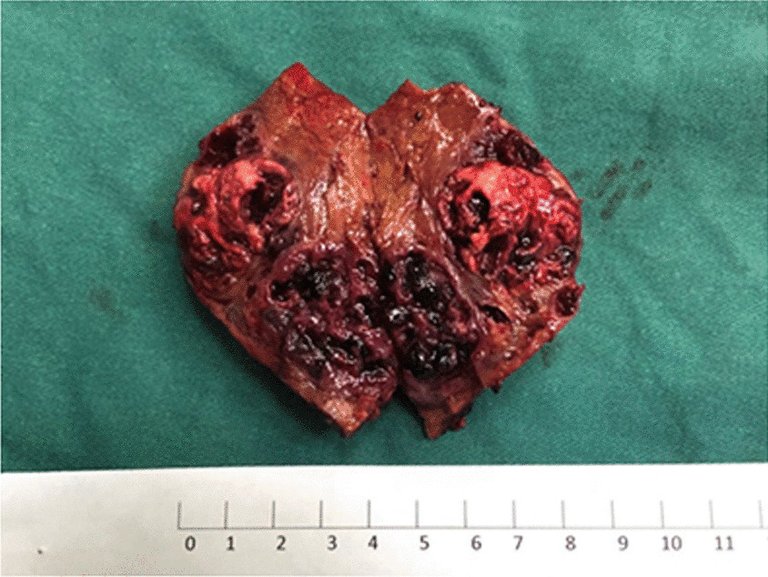A Case Study of Burkholderia gladioli and the Bongkrekic acid Toxin
Leftovers have become a thing for a lot of family. Once you prepare the meal, serve a little part of it, the rest can stay in the refrigerator or freezer until the next time you feel the need to reheat and eat. You know, some families even prepare food for about 1 week in a day, store it in the refrigerator and start to take the portion they want to reheat for the rest of the week. This has become a culture for most homes and it helps us save time in this busy life of ours but what happens when a food has been refrigerated for about 1 year.
First things first, it is impossible to refrigerate a food for about 1 year in my country due to the epileptic power supply but there are some countries where they do not experience power outage unless it is a dire situation and that case it could be possible. So could go wrong? What I will be discussing is common with fermented food although can be found in other types of food but for the sake of this post, i will go with the fermented story.

A group family of had their first launch together and they were a total of 12 people. They decided to eat fermented corn noodles which they had kept in their fridge for a while. 9 out of them decided to eat the noodles while 3 were going to pass because it was always served with a soup that usually tasted sour. The table must have been the best since families came together to share love but it was the beginning of something else.
Soon, one after the other, members of the family who had the meal started to experience bloating, and abdominal discomfort. The discomfort became serious over time that started to make them weak. The feeling of the head banging, followed by dizziness, inability to breath properly, and severe pain was felt. The symptoms were different in different people. The pain was felt in the chest and led to the collapse of the family members one after the other.
![]()
Reaching for an ambulance, at the hospital, blood work was done, and it was seen that they had hyperglycemia (high glucose in the blood), fear for the liver having issues, another test was carried out and it showed that the kidneys and liver were shutting down thus the high presence of sugar in the blood. CT scan showed deposit of fat in the liver. Other blood work showed hyperammonemia (high ammonia in the blood). This is as a result of the kidney not properly filtering Urea which then becomes ammonia in the blood. If this gets to the brain, the patient can become unconscious and it can lead to the shutting down of the brain.
The doctor could find out what they ate from one of them, and then they could get a glimpse of what was going on. Frozen Foods inactivate bacteria and fungi activities, thereby preventing food spoilage but the inactivation of the microbes doesn't mean the microbes are dead. If these microbes find their way into the food before freezing, it means they will be there during and after freezing.
It could be food poisoning as food poisoning can cause stomach pain, vomiting and continuous stool within minutes or hours. This is as a result of microbes usually E.coli but this wouldn't lead the failure of the liver and the kidneys so there was more to just it being a bacteria or a fungi. Another possible cause would be toxins or poison and it was surely associated with the meal they had.

The liver is one of the most metabolic part of the body and the reason they suffered from hyperammonemia was because the liver couldn't process protein to urea. Soon, another blood test showed hypoglycemia being low blood sugar. This was because the liver stopped producing sugar as energy and the mitochondria in cells were shutting down.
Blood sample now showed that the bacteria Burkholderia gladioli was the cause and everything made senses. The bacteria was not found on the noodles since it was cooked and it wasn't found in the blood ample but its toxin was found since it is heat resistant. The toxin is known as Bongkrekic acid and it is very lethal in small amount. It inhibits adenosine triphosphate thereby preventing what cells use for energy from being released. This disruption leads to the shut down of cells and organs in the body.
Burkholderia gladioli make Bongkrekic acid in fermented corns and this bacteria would eliminate the fermenting yeast just like it can eliminate humans if consumed. In fermented coconuts also, bacteria Psuedomonas cocovenenans (now Burkholderia Gladioli Pathovar Cocvenenans) can create Bongkrekic acid along with two other toxins. The bacteria is commonly found in soil and some plants.
This story imitates one of the case study in my references and all the family who had the meal died. Bongkrekic acid is very lethal and so it is important to avoid food that are not properly stored or even stay away from unprofessionally fermented food items.
Post Reference
https://www.ncbi.nlm.nih.gov/pmc/articles/PMC5440313/
https://www.ncbi.nlm.nih.gov/pmc/articles/PMC8393157/
https://www.sciencedirect.com/science/article/abs/pii/S1344622319302834
https://pubmed.ncbi.nlm.nih.gov/29155976/
https://www.ncbi.nlm.nih.gov/pmc/articles/PMC8332338/
https://www.ncbi.nlm.nih.gov/pmc/articles/PMC10648470/
https://www.journalofinfection.com/article/S0163-4453(24)00116-6/fulltext
https://pubmed.ncbi.nlm.nih.gov/10435074/
https://www.cfs.gov.hk/english/multimedia/multimedia_pub/multimedia_pub_fsf_214_02.html
https://febs.onlinelibrary.wiley.com/doi/pdf/10.1016/0014-5793(81)80370-5
https://www.journalofinfection.com/article/S0163-4453(24)00116-6/fulltext
Post Image
Image 1 || Pixels || Group of People Eating Together
Image 2 || Raw Pixels || USNS Mercy Sailors Participate in Mass Casualty Drill
Image 3 || Wikimedia Commons || Gross specimen of liver angiosarcoma
Thanks for your contribution to the STEMsocial community. Feel free to join us on discord to get to know the rest of us!
Please consider delegating to the @stemsocial account (85% of the curation rewards are returned).
Thanks for including @stemsocial as a beneficiary, which gives you stronger support.